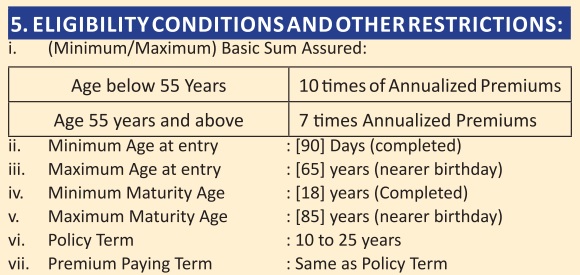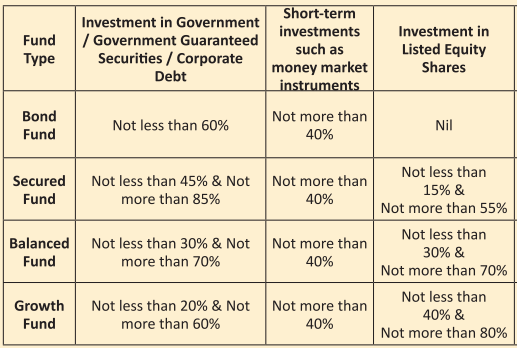LIC SIIP (LIC Systematic Funding Insurance coverage Plan) is a Common premium ULIP. As with ULIPs, the returns are market-linked. However the plan has a lot costly price construction in comparison with new ULIPs we see lately. Higher to remain away.
LIC SIIP plan is an everyday premium ULIP from LIC. As I see, the nomenclature has been chosen to journey the recognition of SIPs (systematic funding plans) in mutual funds. Although there may be nothing unsuitable with the identify, the selection appears intentionally deceptive. We should see this within the context of ranges of monetary consciousness within the nation. Given how a lot traders belief LIC, the plan would have offered properly below any identify. LIC may have performed with higher identify choice.
Let’s go previous the
nomenclature and discover in regards to the LIC SIIP intimately.
LIC SIIP (Plan 852): Salient
Options and Evaluation
- It’s a unit-linked insurance coverage plan (ULIP). This implies there is no such thing as a assure of returns.
- It is a Kind I ULIP. On the time of demise, the nominee will get Larger of (Sum Assured, Fund Worth). Beneath a Kind II ULIP, the nominee will get Sum Assured + Fund Worth. Every thing else being the identical, Kind I ULIP supplies higher returns whereas the Kind II ULIP supplies higher life cowl.
- Coverage Time period: 10 to 25 years
- Common Premium plan (Premium cost time period similar as coverage time period)
- Premium Fee Frequency: Month-to-month, Quarterly, Half-yearly, Yearly
- Sum Assured: Depends upon your entry age
- Entry age as much as 55 years: 10 occasions the annualized premium
- Entry age 55 years and above: 7 occasions the annualized premium
- Eligibility: I reproduce a picture from the product brochure
- Expenses within the plan: Premium allocation expenses, the Mortality expenses, fund administration expenses, switching expenses, partial withdrawal cost, and so on. Will talk about these later within the publish.
- You CAN NOT get a mortgage below LIC SIIP plan. Loans should not permitted for ULIPs.
- You’ve gotten 4 fund decisions (Bond Fund, Secured Fund, Balanced Fund, Progress Fund)



LIC SIIP Plan (Plan 852): Varied
Expenses and their affect
For a deeper understanding about varied kinds of expenses in ULIPs, how they’re adjusted and their affect on returns, seek advice from this publish.
The ULIPs have the
similar nomenclature for the costs. I’ll level out areas the place LIC SIIP is
higher or worse than different common ULIPs.
Premium allocation cost: This cost is deducted from the premium earlier than your cash will get invested. It’s expressed as a share of premium. GST can also be relevant on these expenses.
In LIC SIIP plan,
Premium allocation cost is

Due to this fact, if you happen to
make investments Rs 1 lacs each year within the plan, Rs 9,400 (incl. 18% GST) might be
charged in case of offline buy and Rs 3,540 (incl. 18% GST) in case of
on-line buy. The remaining cash will get invested however might be topic to different
expenses.
From the second
until the 5th yr, Rs 6,490 might be charged in case of offline and
Rs 2,360 might be charged in case of on-line plan.
From the 6th
yr onwards, Rs 3,540 and Rs 1,180 might be charged for offline and on-line
plans respectively.
At a time when personal insurers are shifting in direction of zero premium allocation cost at the very least for on-line gross sales, these expenses are exorbitant.
Mortality expenses: These expenses go in direction of offering you the life cowl. The mortality expenses rely in your age and are recovered each month by way of the cancellation of fund models each month. I reproduce the mortality cost desk from pattern coverage doc on LIC web site.

Mortality expenses improve with age. If you’re previous, mortality expenses will have an effect on your returns extra. On the similar time, since it is a Kind I ULIP (sum-at-risk = Sum Assured – Fund Worth), the affect of mortality expenses might be decrease. Sum-at-risk is the quantity that the insurance coverage firm should pay within the occasion of policyholder demise. In Kind-I ULIPs, because the fund worth will increase, the Sum-at-risk goes down. Due to this fact, the affect of mortality expenses additionally goes down.
I discovered the
expenses barely increased than a number of the ULIPs from personal firms that I
checked out.
LIC SIIP Plan: Return of
Mortality expenses
There’s a provision
that the mortality expenses might be returned to the investor on the time of
maturity. Solely the bottom expenses might be returned to the investor. Any taxes or extra
resulting from your well being situation received’t be reimbursed. This might be paid as well as
to the fund worth.
In isolation, that is an investor-friendly gesture. Nonetheless, this received’t make a lot distinction to your returns.
Why?
Since you get
solely absolutely the mortality expenses. No return is given on these expenses. As talked about earlier, taxes and extra received’t
be returned both.
Furthermore, since
it is a Kind-I ULIP, the quantum of mortality cost will go down yearly and
ultimately go to zero as soon as the Fund Worth exceeds the Sum Assured.
Irrespective of how we
spin it, every little thing comes from the costs.
Mortality expenses
received’t be returned for surrendered or discontinued insurance policies or within the occasion of demise
throughout the coverage time period. These expenses are returned provided that the policyholder survives
the coverage time period.
LIC SIIP: Assured Additions
The plan supplies
assured additions too (sort of loyalty advantages).

I talked about assured additions in my publish on LIC Nivesh Plus (a single premium ULIP from LIC. These are simply advertising and marketing gimmicks. Every thing ultimately comes out of your cash.
LIC SIIP plan: How will the maturity
proceeds be taxed?
The dying profit is all the time exempt from tax.
The identical isn’t
true for the maturity profit.
For maturity proceeds to be exempt from tax, the Sum Assured must be at the very least 10 occasions the annual premium. If this situation isn’t met, the maturity proceeds are taxable. There may be TDS of 5% too.
In case your age on the
time of entry within the plan is lower than 55 years, your life cowl (Sum Assured)
might be 10 occasions Annual Premium. No tax drawback on this case. The maturity
proceeds might be exempt from tax.
Nonetheless, in case your entry age is 55 or above, the Sum Assured is 7 occasions the annual premium. Whereas this helps you save a bit on mortality expenses, the flipside is that the maturity proceeds might be taxable.
LIC SIIP plan: What are the returns
like?
I reproduce the
illustration given within the gross sales brochure.

The illustration
exhibits returns for gross funding returns of 4% and eight% p.a. (as mandated by
IRDA). Being a ULIP, you’ll count on the investments to earn a better return
however that’s not necessary proper now. The returns will even rely in your age
and the funds chosen.
Let’s think about the instance with a coverage time period of 25 years and gross returns of 8% p.a. The investor pays a quarterly premium of Rs 30,000 for 25 years and will get Rs 69.17 lacs on the time of maturity. Notice that is together with Return of Mortality expenses and Assured Additions. Whole funding was Rs 30 lacs.
It is a web return of 6.07% p.a. 1.94% p.a. of your return gone resulting from varied expenses.
Not enticing.
In case your funding earned 8% p.a. you’ll have Rs ~92.07 lacs on the finish of 25 years. LIC SIIP expenses eat away 37% of the gross returns. Not performed.
Factors to Notice
- The returns might be increased (decrease) if the gross returns are increased (decrease).
- The returns might be decrease (increased) if the entry age is increased (decrease).
- This illustration is for an offline plan (by way of an agent). Offline plans have increased prices. On-line plans are cheaper. Every thing else being the identical, the web plan will give higher returns.
- This illustration is for a 30-year-old. For this investor, the Sum Assured is 10 occasions the annual premium. Therefore, the maturity proceeds might be exempt from tax.
- For the entry age 55 years or above, the Sum Assured is just 7 occasions Annual Premium. Therefore, the maturity proceeds might be taxable. The dying profit will nonetheless be exempt from tax. There is no such thing as a illustration for this case within the gross sales brochure.
LIC SIIP: Do you have to make investments?
I counsel you don’t.
Please preserve your insurance coverage and funding wants separate.
In your insurance coverage
wants, buy a plain vanilla time period life insurance coverage plan.
In your funding
wants, buy pure funding merchandise (and low-cost merchandise) comparable to PPF,
mutual funds and so on.
Nonetheless, if you happen to should make investments on this plan, buy the plan on-line. Moreover, word that, in case your entry age is 55 or above, the maturity proceeds might be taxable.
The publish was first printed in March 2020.
Extra Learn/Supply
- LIC SIIP Plan (Plan 852): Product Brochure
- LIC SIIP Plan (Plan 852): Coverage wordings
- LIC Nivesh Plus web page on LIC web site
- choose the Greatest ULIP?
- Why I choose Mutual Funds over ULIPs?
- ICICI Prudential Life Signature ULIP
- How varied expenses in ULIPs destroy your returns?
- In a ULIP, you pay extra for the life cowl as in comparison with Time period Life Insurance coverage Plans
- In conventional plans and ULIPs, your age impacts your returns
- The issue with Single Premium Life Insurance coverage Plans
- The Whole Life Insurance coverage Premium isn’t tax–deductible
- If you’re previous, don’t purchase ULIPs

